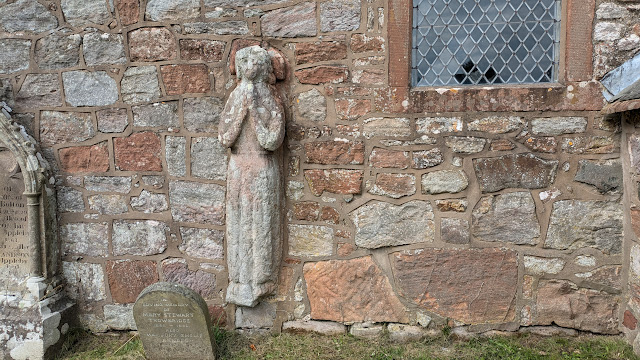Pinned to a noticeboard in one of these churches was a copy of a page from John Betjeman’s English Parish Churches, in which the author explains the appeal of the village churches in this part of Westmorland.
Our first was St Lawrence church in the village of Morland. It is one of the oldest churches in Cumbria and the oldest part, the tower, dates from shortly before the Norman Conquest; the rest of the church was mostly added in the 12th and 15th centuries.
We then moved on a few miles to All Saints church in the village of Bolton, on the River Eden. Built in the 12th century, it is long and narrow without a cruciform plan.
 |
| The narrow south doorway is Norman |
 |
| Gargoyles are everywhere! |
Our final church of the day was St Margaret and St James just outside the village of Long Marton. Built of deep red sandstone before 1066, it has been added to down the centuries.
This lovely church has a number of interesting details but, sadly, our tour had taken longer than expected and we were running out of time. We left, promising ourselves to return to Long Morton as well as the other village churches in the area that we have not visited.










